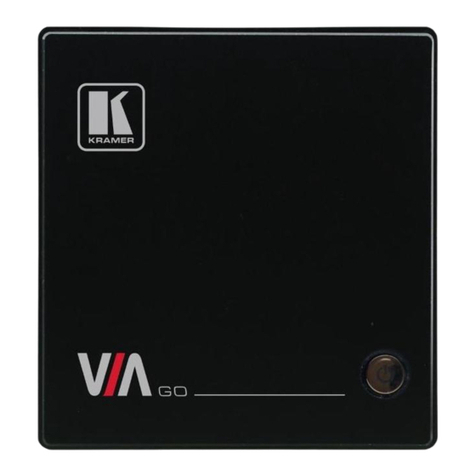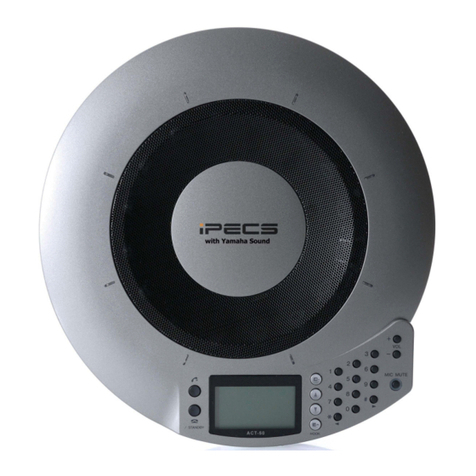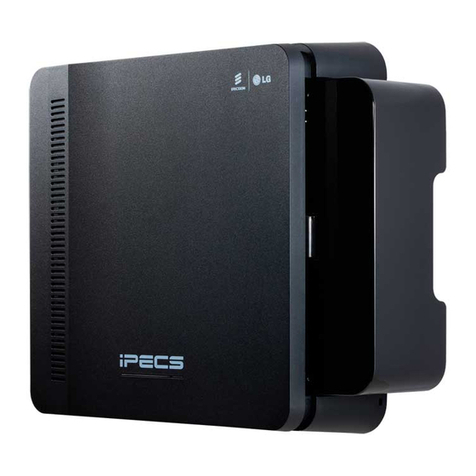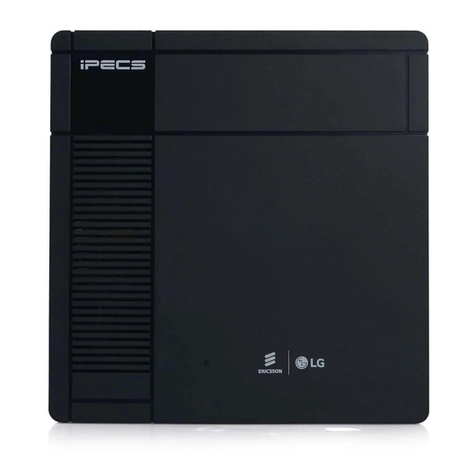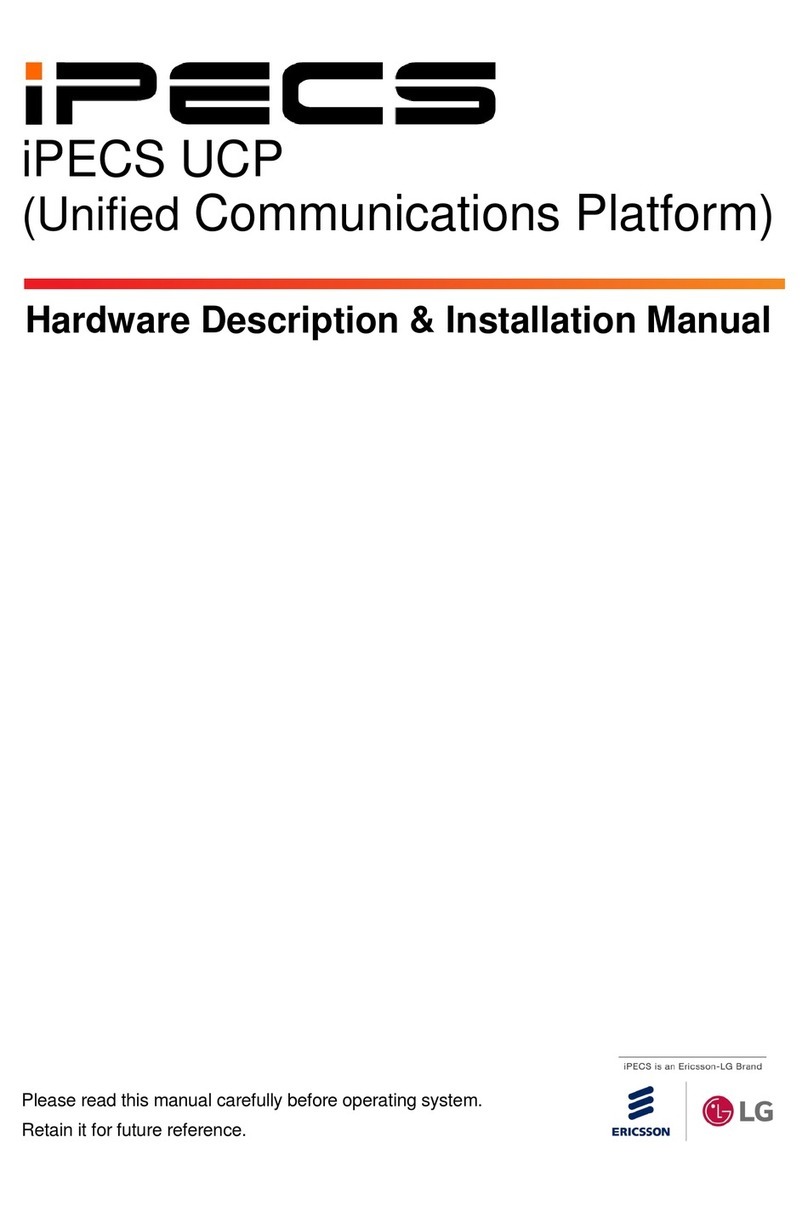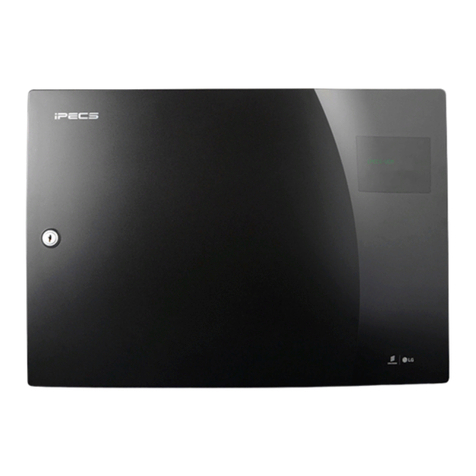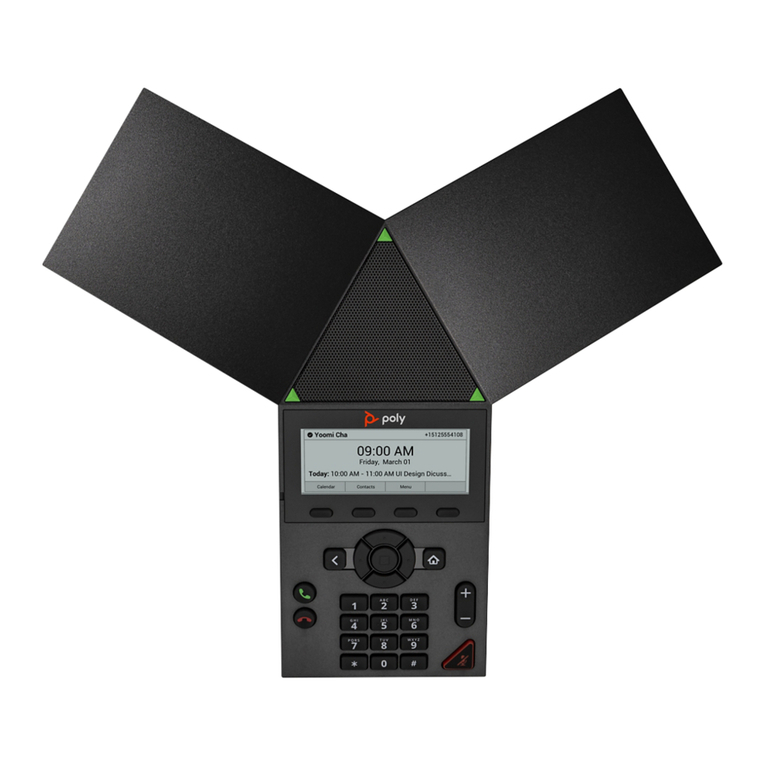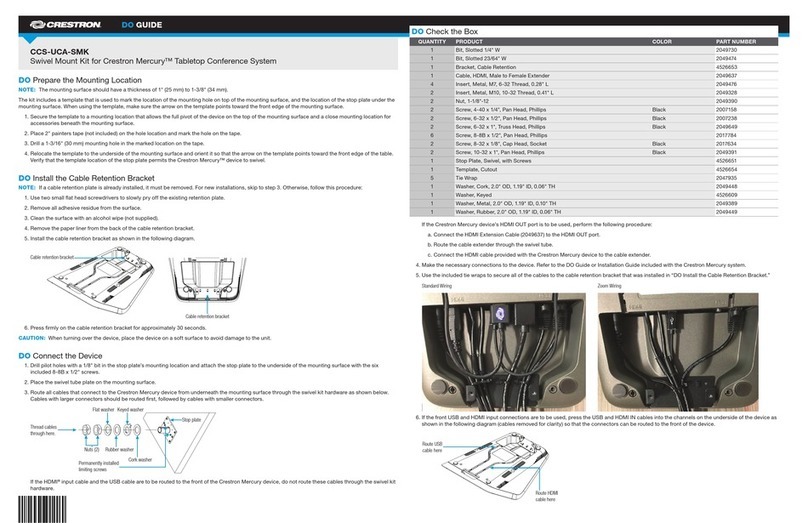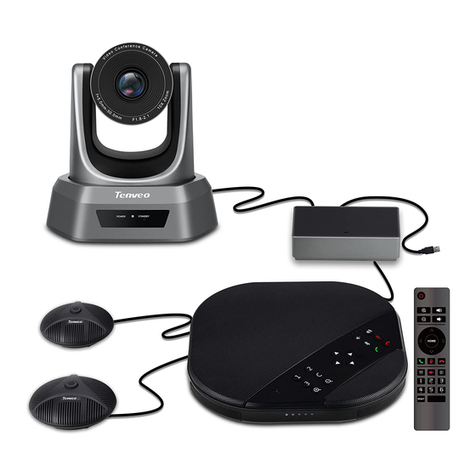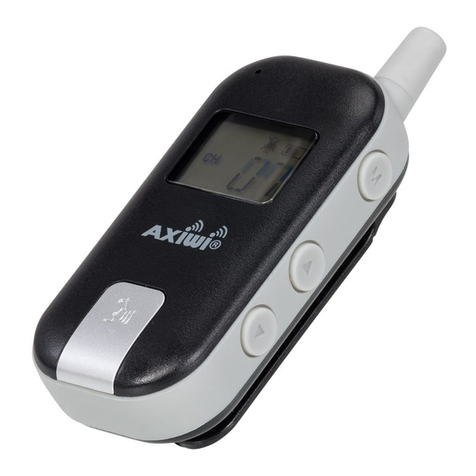iPECS eMG800
Hardware Description and Installation Manual Issue 1.8
ii
4.1 General Board Install Procedure ......................................................................... 26
4.2 Main Processing Board........................................................................................ 27
4.2.1 Switch, Connector and LED Functions..................................................................... 28
4.2.2 Modem Unit Installation............................................................................................ 29
4.2.3 MPB Installation ....................................................................................................... 30
4.2.4 LAN Port Wiring........................................................................................................ 30
4.2.5 Connecting Miscellaneous Devices.......................................................................... 30
4.2.5.1 Alarm/Relay Wiring.............................................................................................................31
4.2.5.2 Page Audio Connector Wiring ............................................................................................31
4.2.5.3 MOH Connector Wiring.......................................................................................................31
4.2.6 USB Connector ........................................................................................................ 32
4.2.7 RS-232 Monitor Wiring............................................................................................. 32
4.2.8 DSIU (Digital and Single Line Interface Unit) Wiring................................................ 33
4.3 CO Line Boards................................................................................................... 34
4.3.1 LCOB (Loop Start CO Line Interface Board)............................................................ 34
4.3.1.1 CMU (Call Metering Unit) Installation .................................................................................35
4.3.1.2 LCOB Installation................................................................................................................35
4.3.1.3 LCOB Wiring.......................................................................................................................35
4.3.2 BRIB (Basic Rate Interface Board) w/Selectable S/T Interface................................ 36
4.3.2.1 Switch and LED Functions..................................................................................................37
4.3.2.2 BRIB Installation .................................................................................................................38
4.3.2.3 BRIB Wiring ........................................................................................................................38
4.3.2.4 Serial Port ...........................................................................................................................39
4.3.3 E1R2-PRIB (Primary Rate Interface Board)............................................................. 40
4.3.3.1 Switch and LED Functions..................................................................................................41
4.3.3.2 E1-PRIB Installation............................................................................................................41
4.3.3.3 E1-PRIB Wiring...................................................................................................................41
4.3.3.4 Serial Port ...........................................................................................................................42
4.3.4 T1-PRIB (Primary Rate Interface Board).................................................................. 43
4.3.4.1 Switch and LED Functions..................................................................................................44
4.3.4.2 T1-PRIB Installation............................................................................................................44
4.3.4.3 T1-PRIB Wiring...................................................................................................................44
4.3.4.4 Serial Port ...........................................................................................................................45
4.4 Extension Boards ................................................................................................ 46
4.4.1 SLIB (Single Line Interface Board w/RJ45).............................................................. 46
4.4.1.1 LED Functions ....................................................................................................................47
4.4.1.2 SLIB Installation..................................................................................................................47
4.4.1.3 SLIB Wiring.........................................................................................................................47
4.4.2 SLIBC (Single Line Interface Board w/RJ21) ........................................................... 48
4.4.2.1 LED Functions ....................................................................................................................49
4.4.2.2 SLIBC Installation ...............................................................................................................50
4.4.2.3 SLIBC Wiring ......................................................................................................................50
4.4.3 DTIB (Digital Terminal Interface Board w/RJ-45)..................................................... 52
4.4.3.1 LED Functions ....................................................................................................................53
4.4.3.2 DTIB Installation..................................................................................................................53
4.4.3.3 DTIB Wiring.........................................................................................................................53
4.4.4 DTIBC (Digital Telephone Interface Board w/RJ21 connector)................................ 54
4.4.4.1 LED Functions ....................................................................................................................55
4.4.4.2 DTIBC Installation...............................................................................................................56
